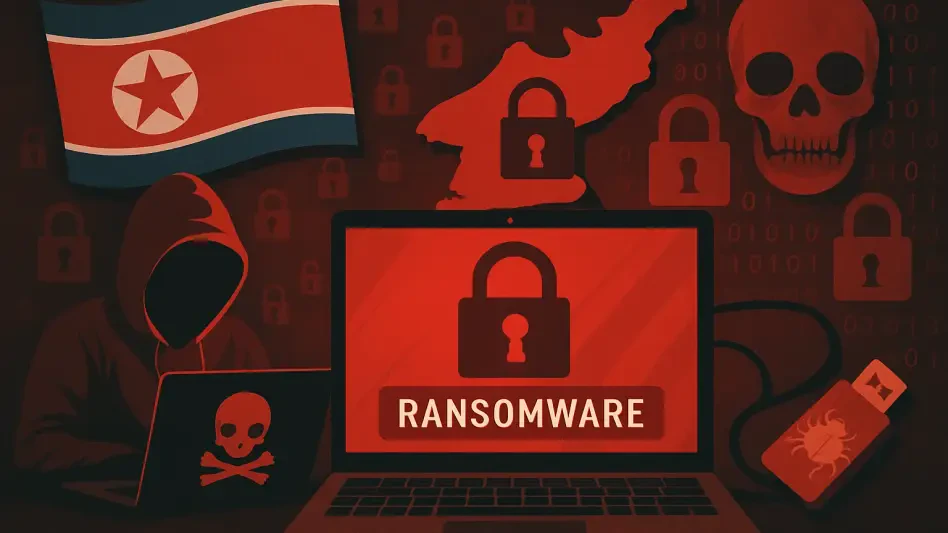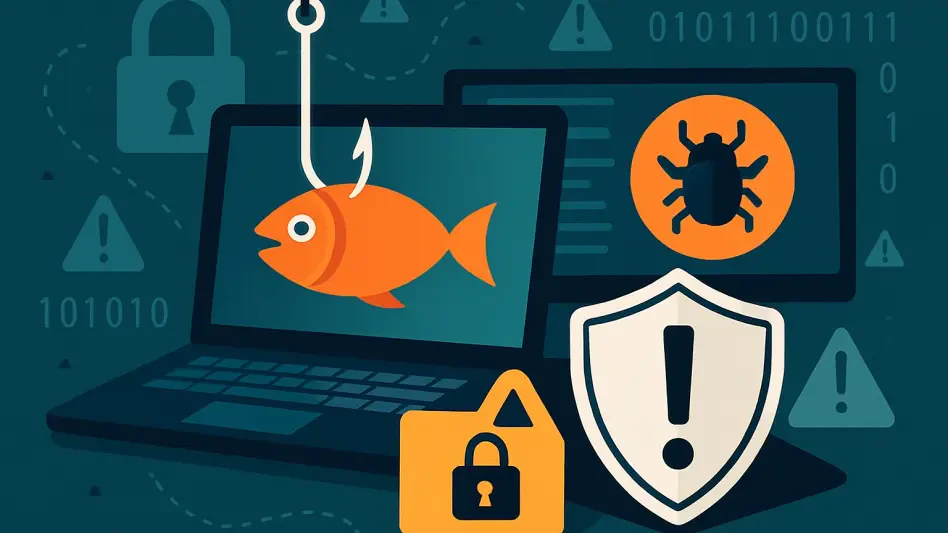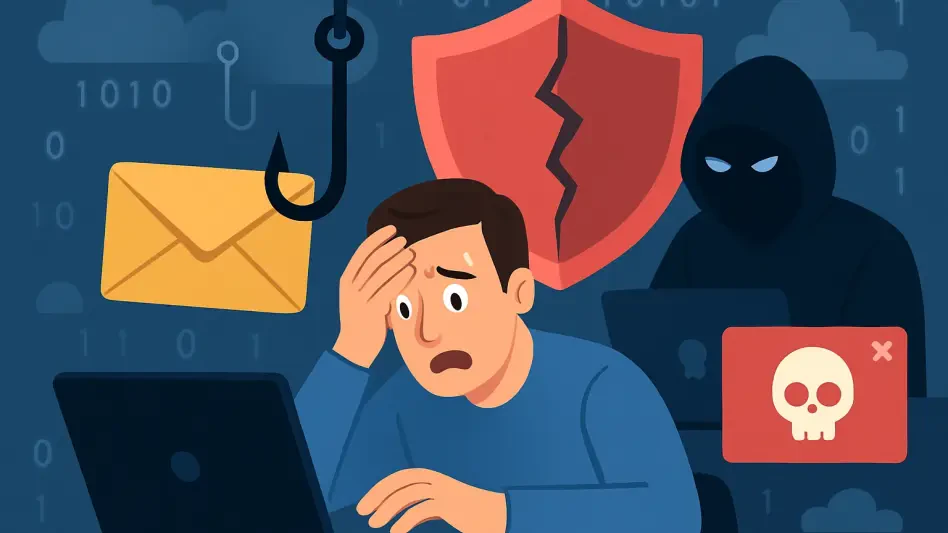What happens when a state-sponsored hacking group, once focused on stealing secrets, turns its sights on financial extortion? In the shadowy realm of cyber warfare, a North Korean threat actor known as ScarCruft has emerged with a chilling new strategy, blending political motives with profit-driven attacks. This group, long associated with espionage, is now wielding ransomware in sophisticated phishing campaigns, targeting unsuspecting victims with devastating precision. The shift signals a dangerous evolution and raises urgent questions about how the global community can defend against such hybrid threats.
This development is not just a footnote in the annals of cybercrime—it’s a stark warning of escalating dangers in the digital landscape. ScarCruft’s pivot to ransomware, alongside its traditional intelligence-gathering operations, underscores a broader trend among North Korean cyber actors: the merging of state-backed espionage with financial motives. As cybercrime costs continue to climb into the trillions annually, the implications of this dual-purpose strategy are profound, particularly for high-priority targets like South Korea. Understanding and countering this threat is critical for organizations and governments worldwide.
A New Cyber Predator Rises
ScarCruft’s transformation from a pure espionage outfit to a ransomware-wielding adversary marks a significant shift in North Korea’s cyber playbook. Historically, the group has been linked to covert operations aimed at extracting sensitive data from government and corporate entities. Now, their arsenal includes tools designed not just to spy, but to cripple systems and demand payment, reflecting a calculated move toward revenue generation that likely supports regime activities in Pyongyang.
This strategic pivot comes at a time when global cybersecurity defenses are already stretched thin. The blending of espionage with financially motivated attacks creates a hybrid threat that is harder to predict and mitigate. For regions frequently in North Korea’s crosshairs, such as South Korea, the stakes are even higher, as these attacks can disrupt critical infrastructure while simultaneously funding further hostile operations.
The audacity of ScarCruft’s approach lies in its ability to adapt and innovate under international scrutiny. By expanding their objectives, they exploit vulnerabilities in both technology and human behavior, turning routine interactions into gateways for chaos. This emerging predator demands a reevaluation of how cyber threats are prioritized and addressed on a global scale.
Why This Evolution Spells Danger
The significance of ScarCruft’s new tactics extends far beyond a single group’s actions—it reflects a disturbing evolution in state-sponsored cybercrime. With cyberattack damages projected to reach unprecedented levels in the coming years, the fusion of political and financial objectives complicates the threat landscape. This isn’t merely about data theft anymore; it’s about holding entire systems hostage for profit while still pursuing strategic intelligence goals.
South Korea, a primary target, faces intensified risks as these attacks grow more sophisticated. The potential for widespread disruption, from compromised government networks to paralyzed private sectors, amplifies the urgency of robust defenses. ScarCruft’s ability to straddle both espionage and extortion means that traditional security measures, often siloed against one type of threat, may fall short against this multifaceted adversary.
Moreover, this trend hints at a broader shift in North Korean cyber strategy, where financial gain becomes as critical as political leverage. As state actors increasingly adopt tactics once reserved for criminal enterprises, the line between nation-state warfare and cybercrime blurs. This convergence challenges international norms and necessitates a unified, adaptive response to safeguard digital ecosystems.
Inside the Phishing Traps and Ransomware Schemes
ScarCruft’s latest campaigns reveal a meticulous and sinister approach to cyber disruption. In one notable operation targeting South Koreans, the group crafted phishing emails disguised as routine postal-code updates tied to address changes. These seemingly innocuous messages lured recipients into opening malicious LNK files embedded within RAR archives, a tactic designed to bypass casual scrutiny.
Once activated, these files unleashed an AutoIt loader, which connected to remote servers to download a barrage of malware payloads. Among them were stealers, backdoors, and ransomware variants like VCD Ransomware and CHILLYCHINO, each engineered to maximize damage—stealing data, locking systems, and extorting victims. This multi-layered attack strategy ensures that even if one component fails, others can still wreak havoc.
Adding to the complexity, ScarCruft has embraced modern programming languages like Rust for malware development, following earlier experiments with Go-based tools. This shift enhances their ability to target diverse platforms while evading detection by conventional security software. Such technical prowess illustrates a deliberate intent to stay one step ahead of defenders, making these phishing traps all the more perilous.
Expert Voices on a Growing Threat
Cybersecurity analysts have sounded the alarm on ScarCruft’s escalating sophistication, describing the integration of ransomware as a “pivotal change” in their operational focus. Experts from South Korean security circles note that this dual-purpose approach—combining espionage with financial extortion—likely serves as a funding mechanism for North Korea’s broader geopolitical ambitions. The strategy maximizes impact by hitting victims on multiple fronts.
Further insights reveal ScarCruft’s commitment to innovation as a means of evasion. “Their move to languages like Rust after using Go-based frameworks shows a clear intent to outpace traditional defenses,” one analyst observed. This adaptability in coding practices not only complicates detection but also signals a long-term investment in refining their attack tools for greater effectiveness.
These expert perspectives highlight a critical need for advanced countermeasures tailored to hybrid threats. As ScarCruft continues to evolve, the cybersecurity community must prioritize intelligence sharing and cutting-edge technologies to anticipate and neutralize these attacks. The consensus is clear: ignoring this growing menace is no longer an option for any organization or nation in the digital crosshairs.
Arming Against the Phishing Onslaught
Defending against ScarCruft’s cunning phishing and ransomware tactics demands a proactive, comprehensive strategy. Security awareness training stands as a frontline defense, equipping employees to spot and report suspicious emails, such as those mimicking postal updates. Platforms designed to enhance human risk management can significantly reduce the likelihood of falling for these social engineering ploys.
Beyond training, technical safeguards are essential. Deploying endpoint detection and response solutions can catch malicious files like LNKs hidden in archives before they execute. Regular software updates are equally vital, closing gaps that loaders like AutoIt might exploit. These measures, while resource-intensive, are non-negotiable in the face of such persistent threats.
Finally, adopting a zero-trust security model offers a robust framework to limit damage if an attack breaches initial defenses. By restricting lateral movement within networks, organizations can contain multi-payload threats and minimize disruption. Combining these steps creates a layered defense capable of thwarting even the most sophisticated phishing campaigns mounted by actors like ScarCruft.
Reflecting on a Battle Fought
Looking back, ScarCruft’s bold integration of ransomware into phishing schemes marked a turning point in the ongoing struggle against North Korean cyber threats. Their calculated use of diverse malware, paired with cutting-edge coding techniques, exposed vulnerabilities that many had underestimated. Each campaign served as a harsh reminder of the relentless innovation driving state-sponsored attacks.
The response from targeted regions and global cybersecurity teams underscored the value of collaboration and adaptability. By sharing intelligence and refining defenses, they laid the groundwork for stronger resilience against hybrid threats. Yet, the fight was far from over, as each victory revealed new challenges on the horizon.
Moving forward, the focus shifted to empowering individuals and organizations with the tools and knowledge to stay vigilant. Investing in ongoing training, embracing advanced security technologies, and fostering international cooperation became the cornerstones of a sustainable defense strategy. Only through such united efforts could the digital world hope to outmaneuver the evolving tactics of adversaries like ScarCruft.








